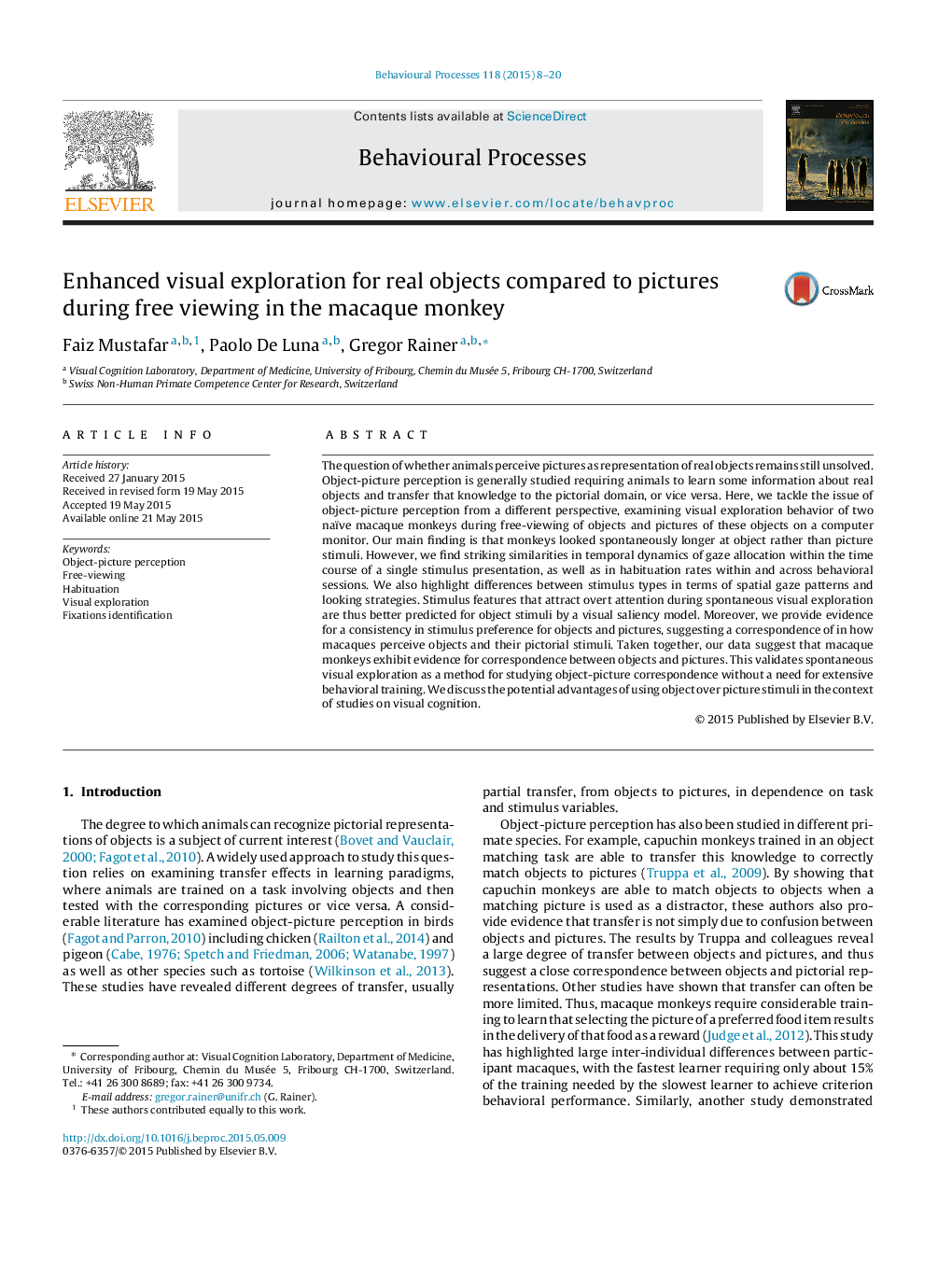| Article ID | Journal | Published Year | Pages | File Type |
|---|---|---|---|---|
| 2426564 | Behavioural Processes | 2015 | 13 Pages |
Abstract
The question of whether animals perceive pictures as representation of real objects remains still unsolved. Object-picture perception is generally studied requiring animals to learn some information about real objects and transfer that knowledge to the pictorial domain, or vice versa. Here, we tackle the issue of object-picture perception from a different perspective, examining visual exploration behavior of two naïve macaque monkeys during free-viewing of objects and pictures of these objects on a computer monitor. Our main finding is that monkeys looked spontaneously longer at object rather than picture stimuli. However, we find striking similarities in temporal dynamics of gaze allocation within the time course of a single stimulus presentation, as well as in habituation rates within and across behavioral sessions. We also highlight differences between stimulus types in terms of spatial gaze patterns and looking strategies. Stimulus features that attract overt attention during spontaneous visual exploration are thus better predicted for object stimuli by a visual saliency model. Moreover, we provide evidence for a consistency in stimulus preference for objects and pictures, suggesting a correspondence of in how macaques perceive objects and their pictorial stimuli. Taken together, our data suggest that macaque monkeys exhibit evidence for correspondence between objects and pictures. This validates spontaneous visual exploration as a method for studying object-picture correspondence without a need for extensive behavioral training. We discuss the potential advantages of using object over picture stimuli in the context of studies on visual cognition.
Keywords
Related Topics
Life Sciences
Agricultural and Biological Sciences
Animal Science and Zoology
Authors
Faiz Mustafar, Paolo De Luna, Gregor Rainer,
